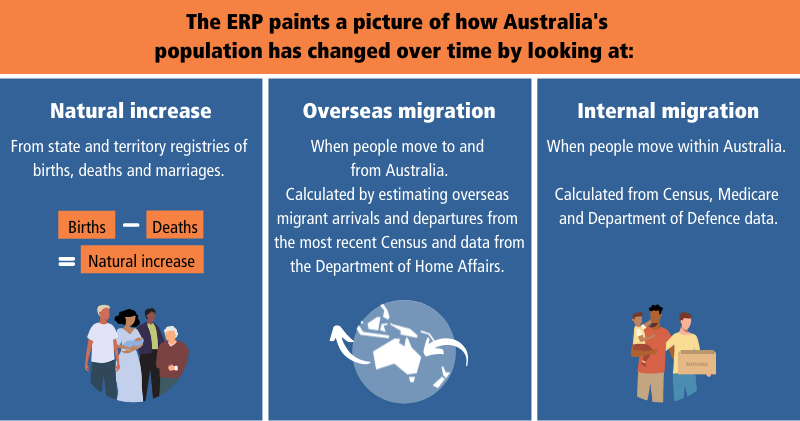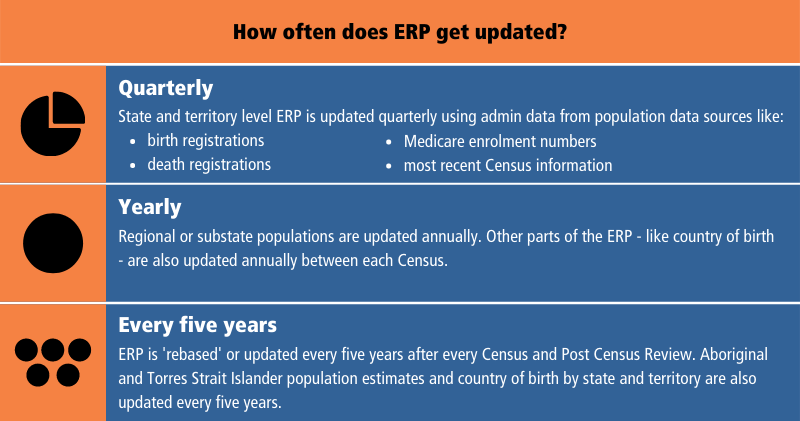Like Count von Count, we here at the Australian Bureau of Statistics love counting. One of our most important statistics is knowing how many people live in Australia.
The official measure of Australia’s population is called Estimated Resident Population, or ERP. It can tell us how many people live in each local area, state or territory by age and sex.
ERP helps inform important decisions for the country like how much money each state and territory gets from GST revenue and the number of seats in Parliament. Recently, ERP has also been used to calculate COVID-19 vaccination rates.
Image





